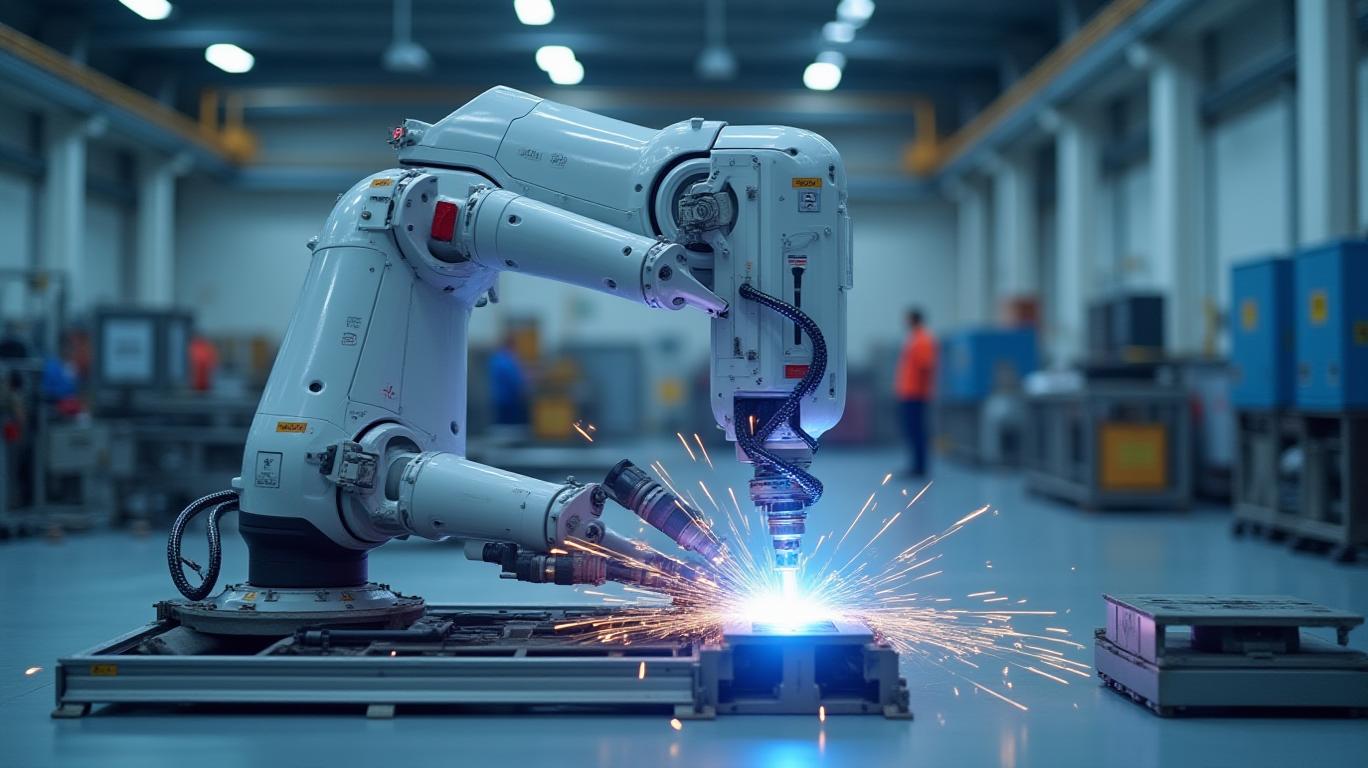ABB's Robotics Spin-off: Unlocking the Full Potential of Automation's Next Frontier
The industrial robotics sector is on the cusp of a transformative shift, and ABB's decision to spin off its Robotics Division into a standalone entity by Q2 2026 marks a bold move to capture this momentum. By divorcing the robotics business from its parent company,
is positioning its $2.3 billion revenue-generating division to thrive as a pure-play automation leader, while simultaneously refocusing its core operations on high-growth areas like electrification and process automation. This strategic split offers investors a rare opportunity to bet on two distinct winners: a lean, tech-driven robotics powerhouse and a streamlined ABB retooled for its own growth trajectory.
The Case for Strategic Focus: Why Independence Matters
ABB's Robotics Division currently operates within a sprawling conglomerate, but its financial and operational profile diverges sharply from ABB's other businesses. With a 12.1% EBITA margin in 2024 (vs. ABB's group average of 18.1%), the robotics division has historically underperformed on profitability metrics—a gap the spin-off aims to bridge. As a standalone entity, ABB Robotics will gain the freedom to allocate capital and prioritize innovation without the drag of legacy ABB operations. Consider this: ****. While competitors like FANUC and KUKA have struggled with margin volatility, ABB Robotics' software-centric strategy (80% of its offerings now integrate AI or advanced software) positions it to command premium pricing and higher margins in the long term.
Growth Catalysts: Software, AI, and the Automation Surge
The division's competitive edge lies in its software-driven product stack. Its Omnicore arc welding platform, autonomous mobile robots (AMRs), and cobot systems are not just hardware—they're ecosystems of data and intelligence. In Q1 2025, despite a temporary dip in divisional margins to 9.9% due to Machine Automation segment headwinds, the robotics segment itself maintained double-digit margins, underscoring its resilience. With order growth of 17% year-on-year and a $1.5 billion backlog, the division is primed to capitalize on secular trends: the global robotics market is projected to hit $200 billion by 2030, driven by automation in automotive, food & beverage, and industrial sectors. ABB Robotics' focus on AI-enabled solutions—such as predictive maintenance software and adaptive manufacturing algorithms—will likely carve out leadership in this space.
Risks and Mitigation: Navigating Near-Term Challenges
No spin-off is without risks. Near-term macroeconomic hurdles, such as trade tariffs and supply chain volatility, could pressure margins further. The division's Q1 margin decline—a result of low Machine Automation volumes—highlights execution risks as the spin-off approaches. However, the sequential margin improvement expected in Q2 (as customer inventory adjustments ease) suggests stabilization. ABB's $20 million U.S. manufacturing expansion and global hub strategy (Sweden, China, U.S.) also reduce geographic exposure, shielding against regional downturns.
Investment Implications: Dual Winners for Shareholders
For ABB shareholders, the spin-off is a win-win. They will receive proportional shares in the new robotics entity while retaining exposure to ABB's restructured core, which will focus on high-margin electrification and process automation. The standalone robotics division, meanwhile, could command a valuation premium—potentially trading at a multiple closer to software peers like —given its tech-driven model and growth profile. Early investor sentiment appears bullish: ABB's stock has risen 18% year-to-date on spin-off optimism, but historical performance suggests even greater potential. Over the past five years, a strategy of buying ABB on the announcement date of quarterly earnings releases and holding for 90 days delivered an average return of 44.8%, though with significant volatility—peaking at a 29.56% drawdown. While the risk-adjusted return (Sharpe ratio of 0.35) underscores the strategy's exposure to market swings, it also highlights the stock's capacity for sharp rallies during key earnings events. The real upside may come post-IPO, as the robotics division's pure-play narrative attracts thematic funds targeting automation and AI.
Conclusion: A Strategic Masterstroke for the Automation Era
ABB's spin-off is more than a corporate reorganization—it's a bet on the future of work. By freeing its robotics division from conglomerate drag, ABB is enabling a $2.3 billion business with world-class AI capabilities to compete on its own terms. While execution risks remain, the long-term tailwinds—industrial automation's 12% annual growth rate, software-driven margin expansion, and untapped demand in emerging markets—are too compelling to ignore. For investors, this split offers a rare chance to own a pure-play stake in the next industrial revolution. The countdown to 2026 is on—and the rewards for early action could be historic.

Comments
No comments yet